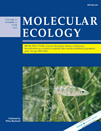
MOLECULAR ECOLOGY
Scope & Guideline
Transforming Ecological Research with Molecular Perspectives
Introduction
Aims and Scopes
- Molecular Mechanisms of Evolution:
Research often explores the molecular mechanisms underlying evolutionary change, including gene expression, genetic drift, and natural selection, to understand how species adapt to their environments. - Ecological Genetics:
The journal publishes studies that investigate the genetic basis of ecological traits and interactions, including population structure, gene flow, and the impact of environmental changes on genetic diversity. - Conservation Genomics:
There is a strong emphasis on conservation-related research that utilizes genomic tools to assess genetic diversity, identify management units, and inform conservation strategies for endangered species. - Microbiome Interactions:
Research on the roles of microbial communities in host health, ecology, and evolution is a significant focus, examining how microbiomes influence host traits and interactions with the environment. - Adaptation and Plasticity:
Studies often highlight adaptive responses to environmental stressors, including phenotypic plasticity and the genetic basis of adaptation in various taxa. - Hybridization and Speciation:
The journal covers research on hybridization processes and their implications for speciation, including genomic analyses that reveal patterns of introgression and reproductive isolation.
Trending and Emerging
- Environmental DNA (eDNA) Applications:
The utilization of eDNA for biodiversity monitoring and environmental assessments is rapidly gaining traction, showcasing its effectiveness in detecting species presence and community composition. - Genomic Approaches to Conservation:
There is a growing trend towards using genomic data to inform conservation strategies, including studies that assess genetic diversity, inbreeding, and adaptive potential in endangered species. - Microbiome Research in Ecology and Evolution:
Research focusing on the role of microbiomes in ecological interactions and evolutionary processes is expanding, with studies examining host-microbe interactions and their implications for health and fitness. - Adaptation Genomics and Phenotypic Plasticity:
Emerging studies are increasingly investigating the genomic basis of adaptation and phenotypic plasticity, exploring how organisms respond to environmental changes at the genetic level. - Multi-Omics Approaches:
The integration of various omics technologies (genomics, transcriptomics, proteomics) is on the rise, allowing for a holistic understanding of biological processes and interactions.
Declining or Waning
- Traditional Morphological Studies:
There is a noticeable decline in studies relying solely on morphological data for species identification and classification, as molecular techniques gain prominence for resolving phylogenetic relationships. - General Biodiversity Surveys:
Research that focuses solely on broad biodiversity assessments without molecular techniques has decreased, as the field shifts towards more integrative approaches that combine ecological and genomic data. - Single-Locus Studies:
The focus on single-locus genetic studies is waning in favor of genome-wide association studies (GWAS) and multi-locus approaches that provide a more comprehensive understanding of genetic diversity and adaptation. - Descriptive Ecology without Molecular Insights:
There is a reduction in descriptive ecological studies that do not incorporate molecular data, as the integration of molecular techniques is increasingly seen as essential for understanding ecological dynamics.
Similar Journals
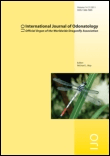
INTERNATIONAL JOURNAL OF ODONATOLOGY
Innovating Insights into Odonatology and BeyondINTERNATIONAL JOURNAL OF ODONATOLOGY, published by Wachholtz Verlag GmbH, is a vital resource for researchers and professionals in the fields of Ecology, Evolution, Behavior, and Insect Science. Established in 1998, this journal provides a platform for the dissemination of innovative research pertaining to odonatology, encompassing the ecological and biological interactions of dragonflies and damselflies. With its focus on advancing knowledge within these scientific disciplines, the journal holds a commendable Q3 ranking in Ecology, Evolution, Behavior and Systematics and a Q2 ranking in Insect Science for 2023, reflecting its significance in academic circles. Although it operates without open access, its articles are accessible through institutional subscriptions, allowing for wide dissemination among scholars and practitioners. The journal's commitment to publishing high-quality, peer-reviewed research makes it an authoritative source of information that enriches the study of odonates and their broader ecological contexts. For inquiries, the journal's editorial team can be reached at C/O Fleet7, Fleethorn 7, Kiel 24103, Germany.

Evolutionary Biology
Connecting Research and Ideas in Evolutionary BiologyEvolutionary Biology is a distinguished academic journal published by Springer, focusing on the intricate fields of ecology, evolution, behavior, and systematics. This journal, with the ISSN 0071-3260 and E-ISSN 1934-2845, has established itself as a critical platform for cutting-edge research and innovative ideas that shape our understanding of biological evolution and its implications. Operating from Germany, it ranks in the Q2 quartile in its category for 2023, placing it in the top tier of journals recognized for quality and impact, with a Scopus rank in the 66th percentile among its peers. Despite not being Open Access, this journal ensures comprehensive dissemination of knowledge essential for researchers, professionals, and students passionate about evolutionary studies. With a publication history tracing back to 1993 and converging years up to 2024, Evolutionary Biology continues to significantly impact the academic landscape, fostering dialogue and collaboration across various disciplines within the biological sciences.

Molecular Ecology Resources
Bridging Molecular Biology and Ecological ScienceMolecular Ecology Resources, published by WILEY, is a leading international journal that specializes in the intersection of molecular biology with ecology and evolution. With an impressive impact factor signified by its Q1 status in multiple categories, including Biotechnology, Ecology, Evolution, Behavior and Systematics, and Genetics for 2023, this journal stands as a reputable source of groundbreaking research within the fields of agricultural and biological sciences. Its Scopus rankings are particularly noteworthy, placing it in the top tier of its respective categories, demonstrating its significance in advancing our understanding of molecular ecology. The journal has been committed to fostering high-quality scientific discourse from 2008 to 2024 and offers open access options to enhance its visibility and accessibility. As a researcher, professional, or student in these dynamic fields, engaging with Molecular Ecology Resources means contributing to and staying informed about the latest innovations and methodologies that shape our understanding of the biological world.

Annual Review of Genetics
Exploring the Depths of Genetic Discovery.The Annual Review of Genetics is a premier academic journal dedicated to advancing the field of genetics through critical, comprehensive reviews that synthesize current research and highlight future directions. Published by Annual Reviews, this esteemed journal boasts an impressive impact factor, ranking in the Q1 category for Genetics, and holds a distinguished position as 14th out of 347 journals in the Scopus ranking for Genetics, placing it in the 96th percentile among its peers. With its convergence of knowledge from 1970 to 2023, the journal serves as an essential resource for researchers, professionals, and students alike, facilitating a deeper understanding of genetic principles and their applications. Although the journal is not open access, it remains a vital platform for disseminating high-quality, peer-reviewed content that shapes the conversation in genetics, making it a must-read for those seeking to stay at the forefront of this dynamic field.
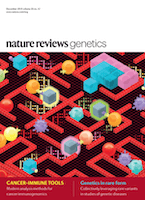
NATURE REVIEWS GENETICS
Exploring the Depths of Genetic Innovation.NATURE REVIEWS GENETICS, published by NATURE PORTFOLIO, stands as a leading journal in the field of genetics, boasting a remarkable reputation reflected in its Q1 ranking across multiple categories including Genetics, Clinical Genetics, and Molecular Biology. With an impressive percentile of 99th in both Genetics and Clinical Genetics, as well as a solid rank in Molecular Biology, this journal is pivotal for researchers, professionals, and students alike who seek to stay informed on the latest advancements and comprehensive reviews in genetic research. The journal's scope encompasses a wide array of topics, providing in-depth insights from fundamental genetic principles to clinical applications, underscoring its importance in bridging basic science and medical practice. Though not an open-access publication, it remains accessible through various academic institutions, enhancing its reach and influence within the scientific community. With publication years spanning from 2000 to 2024, NATURE REVIEWS GENETICS continues to shape the future of genetics research and education.

JOURNAL OF EVOLUTIONARY BIOLOGY
Illuminating the Pathways of Evolutionary ChangeJOURNAL OF EVOLUTIONARY BIOLOGY, published by Wiley, is a prestigious, peer-reviewed journal that has served as a key platform for groundbreaking research in the field of evolutionary biology since its inception in 1988. With its remarkable Q1 status in the 2023 category of Ecology, Evolution, Behavior, and Systematics, the journal is recognized for its high-quality contributions and impactful findings, currently ranking 203 out of 721 in its category on Scopus, placing it in the 71st percentile. The journal covers a wide scope of topics, fostering discussions that advance our understanding of evolutionary processes and their applications, which is critical for researchers, academics, and students alike. While it does not offer Open Access options, subscribers can benefit from articles that explore diverse aspects of evolution and biodiversity. As the journal continues to evolve, it remains an essential resource for those keen on exploring the mechanisms of life’s diversity and adaptation.
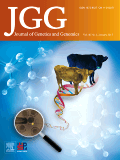
Journal of Genetics and Genomics
Connecting Researchers in the Genetic LandscapeThe Journal of Genetics and Genomics, published by SCIENCE PRESS in China, stands as a significant contributor to the fields of Genetics and Molecular Biology. With an ISSN of 1673-8527 and E-ISSN 1873-5533, this esteemed journal has achieved a remarkable reputation, holding a prestigious Q1 ranking in both Genetics and Molecular Biology as of 2023. This journal not only showcases pioneering research but also fosters vital discussions on contemporary challenges and innovations within genomic sciences. As part of its commitment to facilitating scientific advancement, the journal encompasses a range of research articles, reviews, and short communications, all aiming to illuminate the complexities of genetic structures and functions from 2007 to 2024. Researchers, professionals, and students alike are encouraged to engage with its content, which ranks favorably in Scopus—placing it within the top tier of its categories. Join the community of academic excellence and explore the latest findings that shape our understanding of genomics.

Vavilovskii Zhurnal Genetiki i Selektsii
Fostering Collaboration in Genetic StudiesVavilovskii Zhurnal Genetiki i Selektsii, with ISSN 2500-0462 and E-ISSN 2500-3259, is a distinguished open-access journal published by the Russian Academy of Sciences, Institute of Cytology and Genetics. Since transitioning to open access in 2013, the journal has been dedicated to advancing research and discourse in the fields of genetics and selection, particularly within agricultural and biological sciences. With a current ranking of Q2 in Agricultural and Biological Sciences and Q3 in Biochemistry, Genetics and Molecular Biology according to Scopus, it serves as a pivotal platform for researchers, professionals, and students to disseminate their findings and collaborate on innovative ideas. The journal, housed in the vibrant academic environment of Novosibirsk, Russia, publishes a diverse range of articles that contribute to the ongoing evolution of genetic studies and practical applications in agriculture. Its commitment to quality and accessibility ensures it plays an essential role in the global scientific community, fostering knowledge that bridges theoretical research and practical implementation.
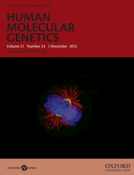
HUMAN MOLECULAR GENETICS
Illuminating the path of molecular genetics discovery.HUMAN MOLECULAR GENETICS, published by Oxford University Press, is a premier journal in the field of genetics, with an established reputation since its inception in 1992. With an impressive Q1 ranking in various categories, including Genetics, Clinical Genetics, and Molecular Biology, this journal engages a diverse readership by reporting significant advances in our understanding of the genetic basis of human health and disease. The journal has achieved notable rankings within Scopus, particularly in Clinical Genetics, making it a key resource for professionals and researchers aiming to stay at the forefront of genetic research. Although it operates under a traditional access model, it remains committed to disseminating high-quality research that informs clinical practice and enhances knowledge in the genetic field. The journal's impact factor signifies its crucial role in shaping contemporary genetic research and its application in medicine. As the field continues to evolve, HUMAN MOLECULAR GENETICS serves not only as an academic repository but also as a vital platform for innovation and discussion among students, researchers, and clinicians.
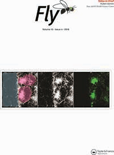
FLY
Advancing the Frontiers of Insect ScienceFLY, an esteemed journal published by Taylor & Francis Inc, is a leading resource in the field of Insect Science, offering cutting-edge research and insights into the biology, ecology, and management of flies and related insect species. With an impressive Impact Factor reflecting its high citation and publication standards, FLY serves as a vital platform for researchers and practitioners aiming to advance their understanding of this diverse and crucial group of organisms. The journal, which has been publishing since 2007 and is set to continue until 2024, is recognized as a Q1 category journal in its discipline, ranked 58 out of 181 in Agricultural and Biological Sciences, placing it in the 68th percentile of the field. Although currently non-open access, the journal is committed to disseminating valuable knowledge and fostering collaboration among scientists, offering unparalleled opportunities for professionals, researchers, and students to engage with transformative science in the insect realm.